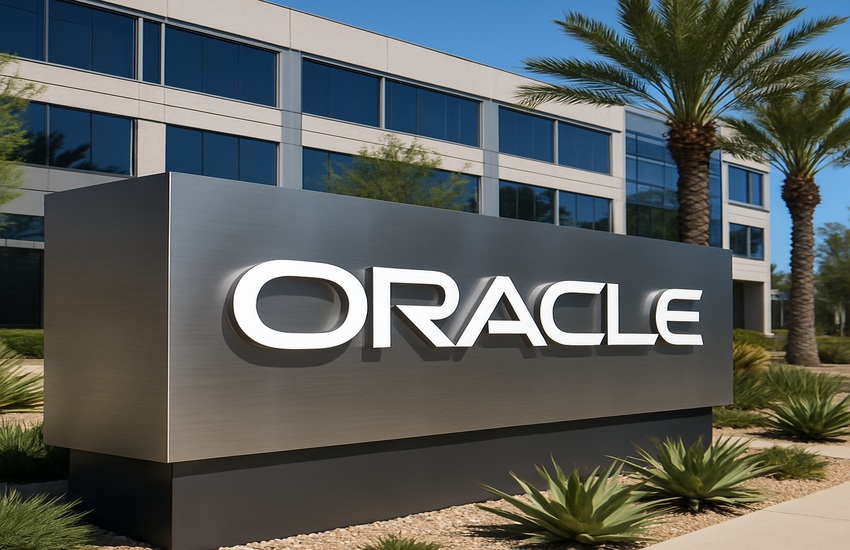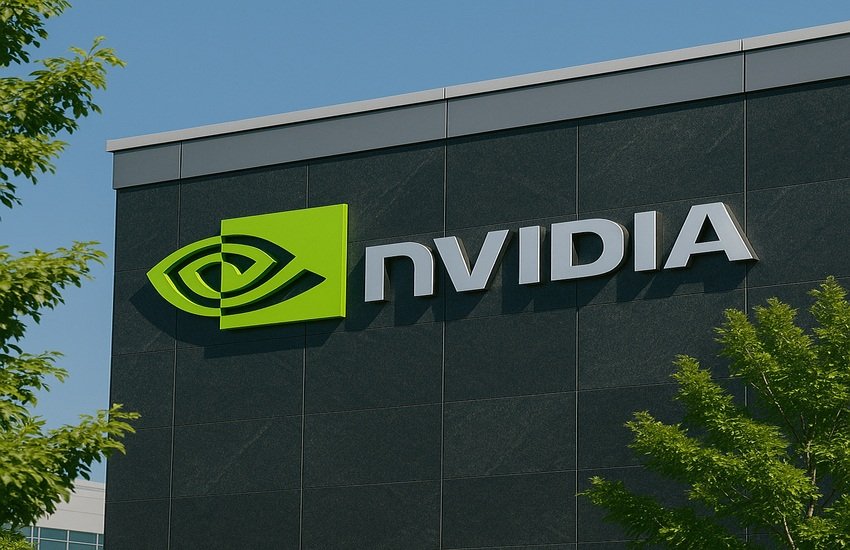Oracle Corporation has catapulted into the center of the artificial intelligence (AI) race with a landmark $300 billion cloud infrastructure deal with OpenAI, positioning itself as the new backbone of AI computing. The agreement, which spans five years starting in 2027, is one of the largest cloud contracts in history and has already helped Oracle lock in a record $455 billion in remaining performance obligations (RPO). This unprecedented backlog of contracted revenue reflects surging demand from major AI players including Meta, xAI, NVIDIA, and AMD. Oracle’s management believes its cloud infrastructure revenue will grow more than tenfold over the next four years, with expectations of $114 billion in revenue by fiscal 2029. While investors are electrified—evident in the 43% one-day share price surge—this AI-fueled transformation is a double-edged sword. With a concentrated revenue stream and massive capital outlays, Oracle’s future now hinges squarely on sustained AI adoption and successful infrastructure execution at scale.
Massive OpenAI Cloud Deal
The $300 billion agreement with OpenAI is the centerpiece of Oracle’s strategic transformation and sets a new benchmark for cloud infrastructure demand in the AI era. Under this deal, Oracle will supply 4.5 gigawatts of power capacity—more than two Hoover Dams—to power data centers dedicated to training and inference workloads. This commitment, which kicks off in 2027, is expected to provide Oracle with over $30 billion in annual revenue from OpenAI alone. The scale of the deal not only dwarfs OpenAI’s current revenue base—estimated at $10 billion—but also underscores the startup’s willingness to lock in supply amid a global compute crunch. Oracle’s Chairman Larry Ellison emphasized that OpenAI, frustrated with Microsoft’s GPU shortages, turned to Oracle’s purpose-built, gigawatt-scale data centers for better speed and efficiency. This deal marks a pivot point for Oracle from a legacy software provider to a hyperscaler infrastructure leader capable of attracting top-tier AI clients. Importantly, the partnership is embedded within OpenAI’s broader Stargate initiative, an umbrella effort to build out large-scale AI compute infrastructure. While the commitment reflects enormous faith in Oracle’s technical capabilities and delivery timelines, it also exposes the company to a single-client risk at an unprecedented scale. If OpenAI stumbles financially or strategically, Oracle could find itself overexposed. Additionally, sustaining the capital buildout and acquiring scarce AI chips like NVIDIA’s GPUs will require continuous investment, supply chain coordination, and likely additional debt—signaling both a bold offensive move and a high-stakes financial gamble.
Explosive Growth In Contracted Revenue & Bold Forecasts
Oracle’s RPO surged to $455 billion by the end of its first fiscal quarter of 2026—up 359% year-over-year and $317 billion sequentially—driven by multiyear deals with OpenAI and other AI leaders. This massive leap positions Oracle with more contracted revenue than at any other time in its history and significantly ahead of traditional cloud rivals in backlog metrics. Safra Catz, Oracle’s CEO, stated that she expects RPO to surpass $500 billion soon and revised the company’s infrastructure revenue targets dramatically upward: $18 billion in FY26, rising to $144 billion by FY30. The cloud infrastructure business grew 54% year-over-year in Q1 FY26, and OCI consumption revenue rose 57%. Importantly, much of this growth is tied not only to AI training, but increasingly to AI inferencing—the use of trained models in real-time business operations—which Ellison believes will ultimately eclipse training in scale. Oracle’s AI database, which vectorizes enterprise data to integrate seamlessly with models like ChatGPT, Gemini, Grok, and Llama, is seen as a cornerstone product. This enables customers to run private, secure, inferencing workflows with their own data—a value proposition Oracle argues no competitor can match. The company’s bullishness is mirrored in its massive capital expenditure plan of $35 billion for FY26, dedicated almost entirely to revenue-generating infrastructure. However, despite the scale and confidence, Oracle’s strategy hinges on execution: converting RPO into recognized revenue on schedule while managing component shortages, permitting issues, and operational scaling across dozens of new data center locations in the U.S. Any delays or underutilization could put downward pressure on future earnings and valuations.
Execution Challenges & Financial Risk
While Oracle’s AI-driven trajectory has captured investor enthusiasm, its financial structure now carries notable risk amid heightened execution demands. The company’s operating cash flow for the last twelve months was $21.5 billion, while capital expenditures reached $27.4 billion—resulting in negative free cash flow of $5.9 billion. Oracle’s leverage is significantly higher than its cloud peers, with a total debt-to-equity ratio of 427% compared to Microsoft’s 32.7%. This level of indebtedness limits financial flexibility and could magnify downside risk if AI demand moderates or if major clients such as OpenAI fail to meet contractual expectations. Moreover, building data centers at the required gigawatt scale necessitates timely acquisition of scarce GPUs, advanced networking hardware, and long permitting cycles—all while maintaining high margins. The company disclosed that it expects rapid equipment turnover and fast customer onboarding, with some clients starting revenue-generating operations within a week of data hall completion. However, this just-in-time strategy leaves Oracle vulnerable to bottlenecks in supply chains or unexpected customer-side delays. Furthermore, as Oracle transitions from a software licensing giant to a hyperscale cloud provider, its gross margins may face pressure due to the capital-intensive nature of infrastructure versus software. The ongoing dependence on GPU vendor relationships, fluctuating chip prices, and power supply limitations in multiple U.S. states introduce additional layers of complexity. Oracle’s recent valuation spike could quickly reverse if revenue conversion lags or if broader AI market expectations reset, making the company’s $455 billion backlog both a strength and a liability depending on execution precision.
Strategic Positioning & Industry Context
Oracle’s aggressive push into AI infrastructure sets it apart from traditional cloud leaders like Amazon, Microsoft, and Google, who are pursuing broader multi-pronged AI strategies but are not as heavily reliant on contracted AI infrastructure revenue. While AWS, Azure, and Google Cloud command larger cloud market share, Oracle is positioning itself as the specialized provider for high-performance AI compute—emphasizing its unique capability to vectorize enterprise data and integrate it securely with third-party LLMs. The company is betting heavily on inferencing as the long-term growth engine, leveraging its deep penetration in enterprise database systems to offer differentiated AI integration. Oracle’s Butterfly offering—a compact, rack-based, full-feature private cloud product priced at $6 million—enables large enterprises to run AI workloads on-premises with cloud-like scalability. In doing so, Oracle also mitigates the regulatory and privacy barriers associated with sending sensitive enterprise data to public clouds. Strategically, Oracle benefits from being both a top-tier application and infrastructure provider, giving it cross-stack synergies and a flywheel effect as customers increasingly deploy AI within existing Oracle applications. However, the same strategic focus raises concentration risks. Oracle’s future revenue mix is rapidly shifting toward AI services, reducing its exposure to traditional application revenue and increasing vulnerability to an AI spending slowdown. Unlike Microsoft, which can fall back on Office and Windows revenues, Oracle’s fate is increasingly tied to AI workloads. The stock is now trading at over 76x LTM earnings and 41.6x LTM EBITDA—multiples that price in continued hypergrowth. Any shift in sentiment or hiccups in AI spending cycles could compress these multiples quickly.
Key Takeaways
Oracle’s transformation into an AI infrastructure powerhouse, fueled by the $300 billion OpenAI deal and a record $455 billion in contracted revenue, marks a pivotal evolution in the company’s 48-year history. Its strategy leverages proprietary database innovations, hyperscale cloud infrastructure, and tight integration with leading LLMs to differentiate in a highly competitive AI market. While the revenue potential is significant, execution complexity, capital intensity, and customer concentration risks remain high. As of September 10, 2025, Oracle trades at elevated valuation multiples—76.03x LTM P/E, 41.59x LTM EV/EBITDA, and 17.23x LTM EV/Revenue—well above industry norms, suggesting a market premium based on aggressive growth expectations. Investors and stakeholders must weigh Oracle’s unique AI capabilities against its financial leverage and the operational demands of scaling a $300 billion infrastructure roadmap. Whether Oracle can sustain its momentum or face volatility as the AI market matures will likely hinge on its ability to consistently execute and diversify its customer base beyond a few flagship deals.





